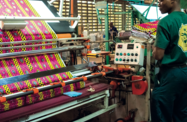While Ghana’s economy as a whole is burgeoning, its manufacturing segment has been struggling to meet its full potential, prompting the private sector and the government to work together to ensure that the rising energy and commodity sectors support rather than hinder industrial development.
Having grown at the relatively moderate annual average rate of 2.3% for 10 years, local press reports suggest that the manufacturing sector grew by 1.7% during 2011, well below the target of 7%, while the IMF forecasts that overall GDP growth reached 13.5%, one of the highest levels in the world.
There are a number of possible reasons for the sector’s sluggishness, one of which is the competitive environment. Ghanaian manufacturers, like producers all over West Africa, have found themselves grappling with an influx of affordable imported manufactured goods, particularly from China. Chinese exporters are benefitting from enviable advantages, including the economies of scale that come from mass production for the global market, low costs and favourable exchange rates. Domestic producers, however, are hindered by underdeveloped transport networks, input tariffs, and high electricity and raw materials costs.
The straitened times are making it harder for Ghanaian manufacturers to reinvest in technology and equipment, particularly when facing the high lending rates on offer from the country’s banks. Interest rates in the country have historically exceeded 20%, which significantly impacts the ability of small and medium-sized manufacturers to access credit.
Manufacturing may also be suffering to an extent from symptoms of so-called “Dutch disease”, a phenomenon named for the negative effects that oil industry growth had on Dutch manufacturers in the 1960s. In Ghana, the economy’s dependency on commodities such as cocoa and gold, not to mention the country’s newfound oil wealth, has caused concern for declines in other sectors.
However, while Dutch disease is most often associated with increases in the exchange rate caused by an influx of investment and rising demand for exports, the Ghanaian cedi has actually devalued against the dollar in recent years, which has helped limit any impact on the export competitiveness of manufacturers, although labour costs, input tariffs, import prices and infrastructural weaknesses still constrain production.
Another aspect of this phenomenon is the way in which extractive industries utilise resources, including labour, investment, bank credit, legislative attention and government support, which have traditionally crowded out other sectors like manufacturing, not just in Ghana but in other resource rich countries, like Nigeria or Gabon.
The government is aware of the importance of boosting manufacturing to diversify the economy and reduce its dependence on commodity exports, as well as increase value-added industry within the country’s borders. To this end it launched a new industrial plan in 2011. The strategy will run to 2015 and complement a number of other development schemes with similar timeframes in areas such as trade, private-sector growth and poverty reduction. The overall aim of the plan is to increase industrial competitiveness and highlights four broad policy areas: production and distribution; technology and innovation; incentives and regulation; and cross-cutting issues that affect social development. Under each of these areas, there are more specific, targeted projects.
The first area aims to improve the manufacturing value chain at several levels; it includes increasing the domestic supply of competitively-priced inputs and machinery for industries, as well as improving distribution to make it swifter and more efficient. Also under this component are related projects on land and infrastructure development, manpower, subcontracting and marketing.
The technology and innovation scheme includes three projects: strengthening industrial research, improving Ghana’s industrial intellectual property framework and increasing and developing information and communications technology use in the sector. Incentives and regulations cover efforts to improve the business climate for investment in industry, while cross-cutting areas include health and safety, gender in the workplace and data management.
Sector leaders have broadly welcomed the plan, and the private sector played a leading role in shaping it. The Association of Ghana Industries is also supportive of the government’s broad economic policy, which has helped underpin macroeconomic stability, but has said that more could be done to ease the cost of doing business in Ghana, including a reversal of the increase in corporate tax on small and medium-sized enterprises (SMEs) from 3% to 6%, further tax incentives and easier access to credit and official funds for smaller firms.
While international conditions have made recent years slower ones for Ghanaian industry, the fundamentals for manufacturing growth are excellent. The country has an abundant source of feedstock (if not a broad range of them), a rapidly growing economy, a market of 24m people and access to some 250m more through ECOWAS, a stable yet open political scene, relatively low costs and its infrastructure is continually improving.
Indeed, it performs as a distributor to the landlocked countries to the north, to which it could export more of its own goods. New policy, supported and supplemented by the private sector, could see Ghana’s manufacturers capitalise on these considerable benefits and overcome the current deceleration of growth.

